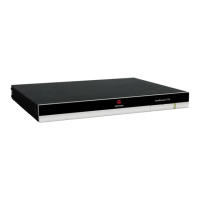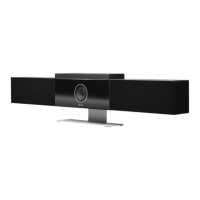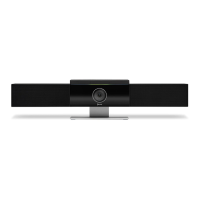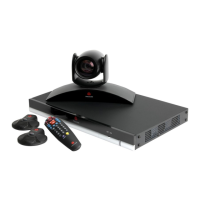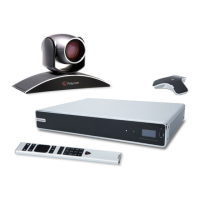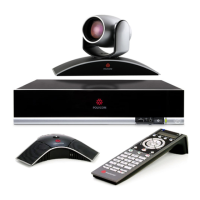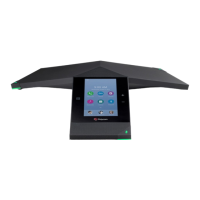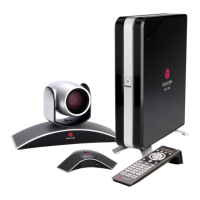Design Guide for the Polycom SoundStructure C16, C12, C8, and SR12
A - 12
Floating-Point Arguments
Floating-point arguments represent a floating-point value. They are repre-
sented using a string of digits (0030-0039), an optional decimal point symbol
(002E), an optional E (0045) or e (0065) for indicating an exponent, and optional
plus symbols (002B) or minus symbols (002D) for indicating the sign of the
mantissa or exponent.
Examples of valid floating-point arguments are 0.618, -4.8, 2, +3.14, 6.022e23,
6.626E-34, and -1.759e11. Floating-point arguments must be less than or equal
to 32 bytes in length.
System-Defined Text Arguments
Text arguments that are defined by the command set consists only of digits
(0030-0039), lower-case characters (0061-007A), and the underscore character
(005F). The underscore character is used when it would make long arguments
more readable. Examples of valid system-defined text arguments are
cr_mic_in and agc_rate. System-defined text arguments must be less than or
equal to 32 bytes in length.
User-Defined Text Arguments
Text arguments and data that are user-defined (for example, virtual channel
labels) support all UTF-8 symbols except the control symbols (0000-001F). The
full range of UTF-8 symbols is supported to allow user-definable labels in
other languages. The control symbols are not supported because they are typ-
ically unprintable. In particular, the line feed (000A) and carriage return
(000D) symbols are not allowed for two reasons: first, those symbols are used
as command terminating characters; and second, the command set does not
support the concept of multi-line text arguments.
User-defined text arguments are delimited by a quotation mark symbol (0022)
at the start and end of the string. Quotation mark symbols appearing within
the text argument can be escaped by a preceding backslash symbol (005C). Lit-
eral backslash symbols appearing within the text argument are escaped by a
preceding backslash symbol.
Examples of valid user-defined test arguments are “Table Mics”, “Mic 1\\3”,
and “\”Program\” Audio”.
User-defined text arguments must be less than or equal to 256 bytes in length.
Note that this may be less than 256 symbols, since most of the UTF-8 symbols
are multi-byte. The quotation mark delimiters and escape characters are
included in the 256 byte limit.
Acknowledgements
Control commands generate acknowledgements that are similar to the com-
mand format. The acknowledgements are typically prefixed with the keyword
val to indicate the value returned from the command.
